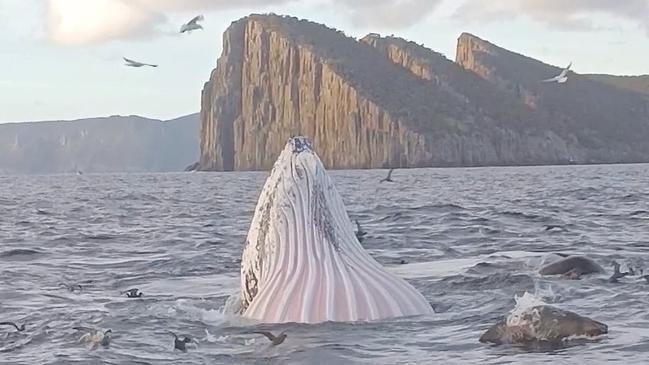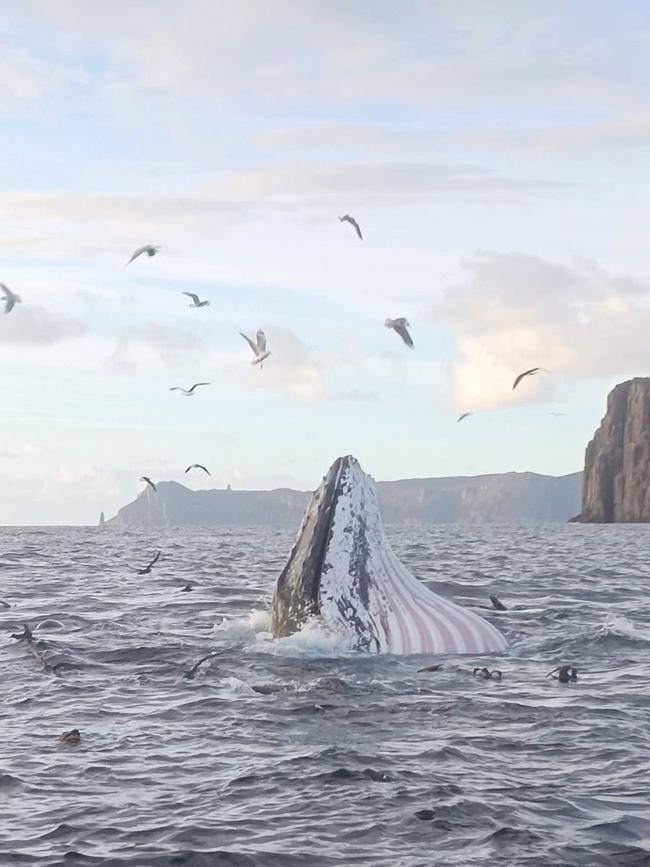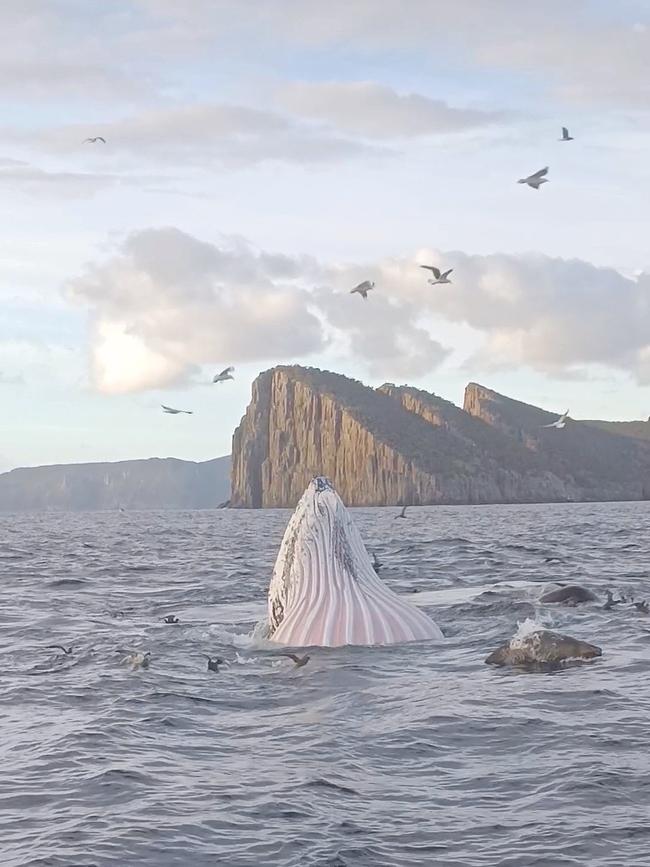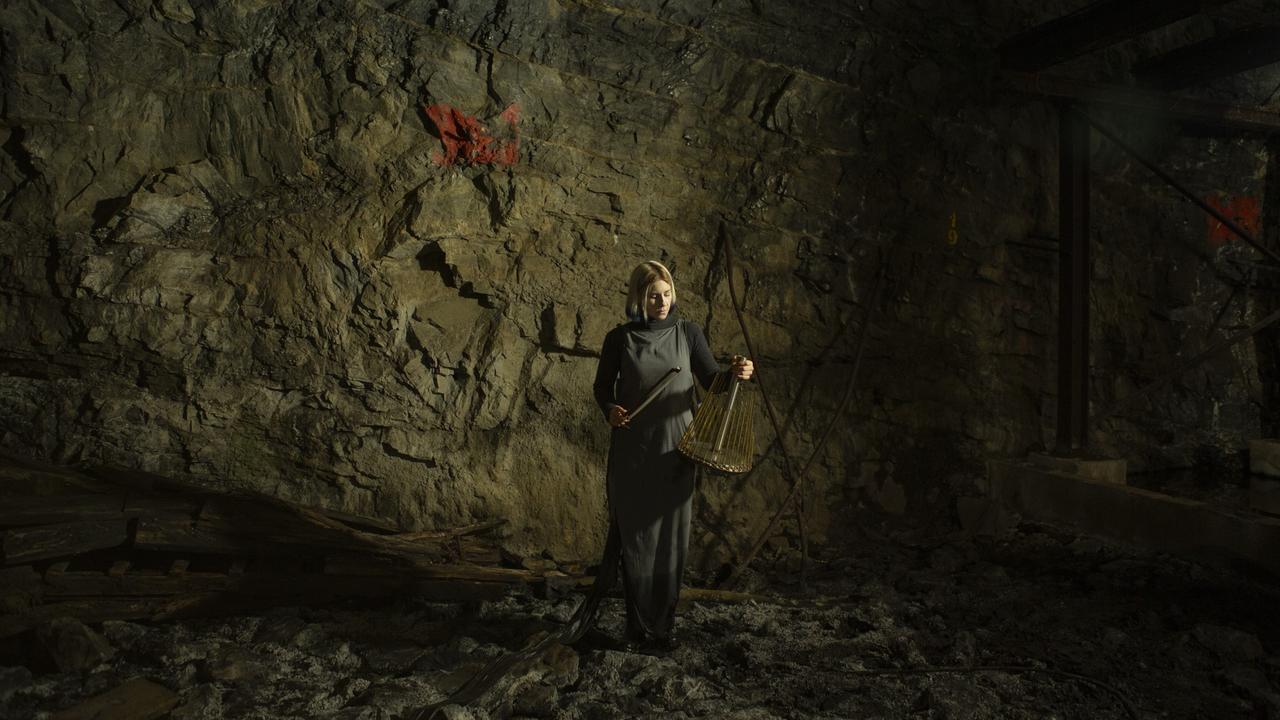Humpback whale numbers rebounding on the East Coast in boon for conservation
A Tasmanian skipper has caught a rare glimpse of humpback whales feasting on fish at dawn alongside other sea creatures. He says population numbers are healthier than they’ve been in years.

Tasmania
Don't miss out on the headlines from Tasmania. Followed categories will be added to My News.
Humpback whales are making their way through Tasmanian waters in record numbers as they head to Antarctica for a krill feast, according to a skipper who has observed their migration for more than a decade.
Kane Bowman, 43, a skipper for Tasman Island Cruises, said he was out at dawn on Friday piloting an empty boat when he noticed an unusual gathering of birds and seals off the mouth of Fortescue Bay. Stopping to investigate, he saw two humpback whales join the commotion, opening their mouths to scoop up fish alongside seals, dolphins and birds.
“The seals and dolphins were working these fish, and the humpies were joining in as well,” Mr Bowman said. “They all just work together for the greater good — a feed.”

Humpbacks are currently migrating from Queensland to Antarctica with their calves to feed on krill stocks. Mr Bowman says this year’s migration, which lasts about six weeks, has been the busiest he has seen since pre-Covid times.
“I don’t know what it is, but we’re seeing multiple humpbacks every single day. It’s the most animals I’ve seen since pre-Covid,” Mr Bowman said.
His observations align with scientific reports of record-high humpback whale populations on the east coast of Australia. Experts estimate the population migrating between Queensland and Antarctica has reached around 40,000 — a remarkable recovery from the brink of extinction just a few decades ago.

Humpback populations were decimated by hunting, with numbers reduced to an estimated 3.5–5 per cent of their pre-whaling abundance by the time the International Whaling Commission banned humpback hunting in the Southern Hemisphere in 1963. Fewer than 150 humpbacks were thought to remain in the wild at that time.
Today, the population is so healthy that scientists believe it may have reached its “carrying capacity,” meaning the number of whales born equals the number that die of natural causes each year.
Despite seeing them regularly, Mr Bowman said humpback encounters remain exciting, as much of their lives and behaviours remain mysterious.
“By the time they come back to Tassie, we’ve got much colder water here, so they’re pretty pumped to get a belly full of food,” he said.
eleanor.dejong@news.com.au




